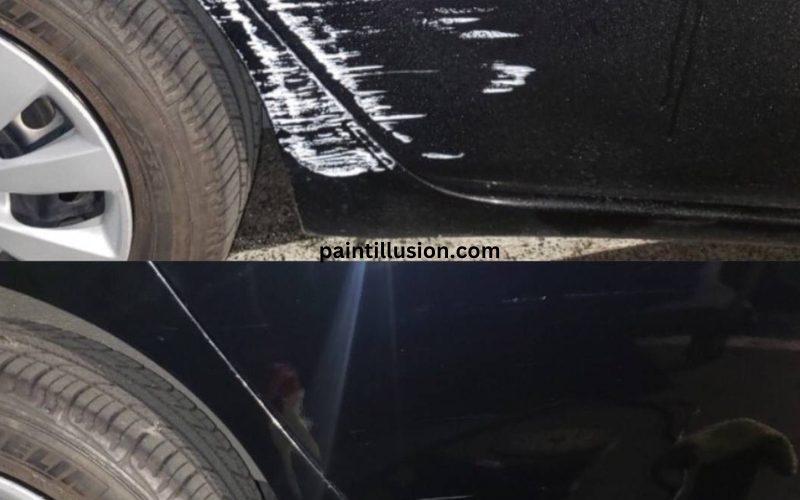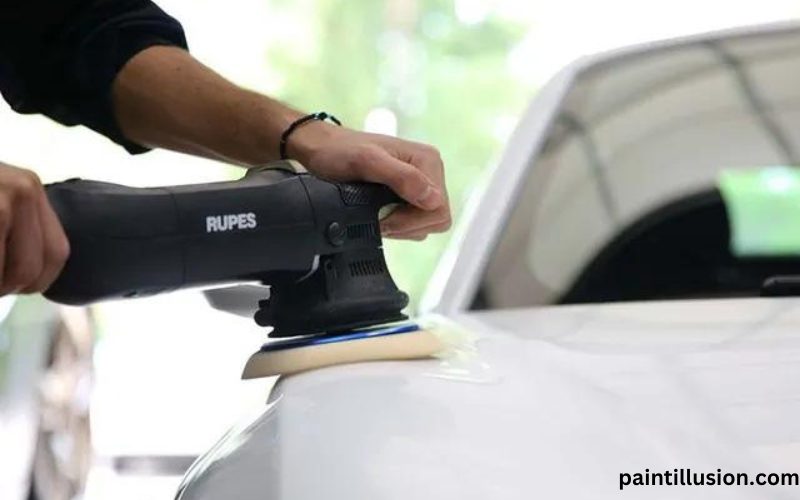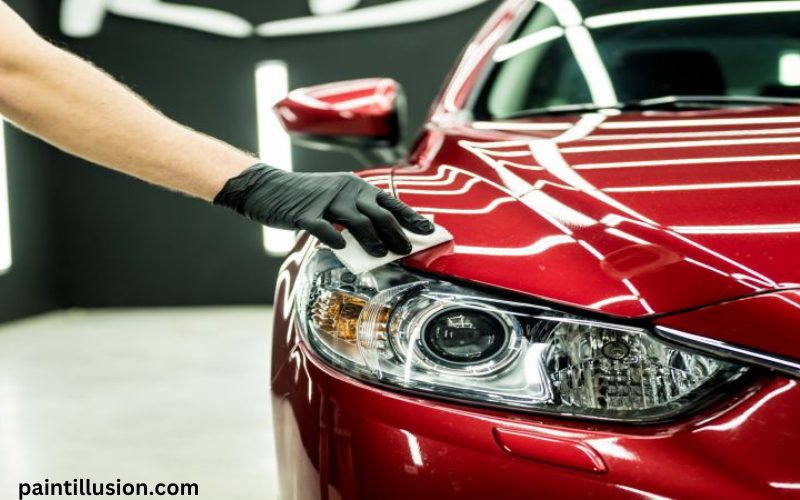Paint correction is a process that involves restoring and enhancing the beauty of a vehicle’s paintwork. Over time, a car’s paint can become dull, scratched, or swirled, diminishing its overall appearance. Paint correction is a professional service that aims to eliminate these imperfections and bring back the luster and shine of the paint. If you’re considering getting paint correction done on your vehicle, one of the first questions that may come to mind is, “How much does paint correction cost?” In this article, we will explore the factors that affect paint correction cost, the different levels of paint correction, the process involved, and tips for finding a reliable and affordable paint correction service.
What is Paint Correction?
Before diving into the cost of paint correction, it’s essential to understand what paint correction actually is. Paint correction is a meticulous process that involves removing imperfections from a vehicle’s paintwork. These imperfections can include swirl marks, scratches, water spots, oxidation, and other forms of damage. The goal of paint correction is to restore the paint to its original condition and enhance its appearance. This process is typically performed by trained professionals who use specialized tools, compounds, and polishes to carefully remove the imperfections and reveal a flawless finish.

Factors Affecting Paint Correction Cost
The cost of paint correction can vary depending on several factors. Understanding these factors will give you a better idea of what to expect when it comes to pricing. Here are some of the key factors that can influence the cost of paint correction:
- Severity of Paint Damage: The extent of the imperfections on the paintwork will play a significant role in determining the cost. If your vehicle has minor swirl marks or light scratches, it will likely require less time and effort to correct, resulting in a lower cost. On the other hand, if your car has deep scratches or extensive damage, the paint correction process will be more involved and may require more time and resources, increasing the cost.
- Vehicle Size and Type: The size and type of your vehicle can also affect the cost of paint correction. Larger vehicles, such as SUVs or trucks, will generally require more time and materials, which can lead to a higher cost. Additionally, certain types of vehicles, such as luxury or exotic cars, may require specialized paint correction techniques or products, making the service more expensive.
- Paint Protection: If you have previously applied paint protection, such as ceramic coating or paint sealant, it may need to be removed before the paint correction process can begin. The removal of these protective coatings can add to the overall cost of paint correction.
- Location and Reputation of the Service Provider: The location of the paint correction service and the reputation of the service provider can also impact the cost. Services located in high-end areas or renowned for their expertise may charge higher prices due to their reputation and demand.
By considering these factors, you can have a better understanding of the range of costs associated with paint correction services.
Different Levels of Paint Correction
Paint correction can be categorized into different levels, each with its own cost and level of refinement. These levels are determined by the severity of the paint damage and the desired outcome. Here are the three main levels of paint correction:
- Single-Stage Correction: This level of paint correction is the most basic and is suitable for vehicles with minor imperfections. It involves a single polishing step to remove light scratches, swirl marks, and other minor blemishes. Single-stage correction provides a noticeable improvement in the appearance of the paintwork but may not completely eliminate deep scratches or more severe damage.
- Multi-Stage Correction: Multi-stage correction is a more comprehensive process that involves multiple polishing steps. It is designed for vehicles with moderate to severe paint damage. This level of paint correction can effectively remove deeper scratches, oxidation, and other significant imperfections. Multi-stage correction provides a higher level of refinement and produces a more flawless finish.
- Full Correction: Full correction is the most extensive level of paint correction and is recommended for vehicles with severe paint damage or those seeking a show-quality finish. This process involves multiple polishing steps, compounding, and refining to eliminate even the most stubborn imperfections. Full correction requires a significant amount of time and expertise, making it the most expensive level of paint correction.
Understanding the different levels of paint correction will help you determine which level is suitable for your vehicle and budget.
The Process of Paint Correction
The paint correction process involves several steps, each aimed at restoring and enhancing the appearance of the vehicle’s paintwork. Here is a brief overview of the typical paint correction process:
- Inspection: The first step is a thorough inspection of the vehicle’s paint to assess the extent of the damage and determine the best course of action.
- Washing and Decontamination: The vehicle is thoroughly washed to remove dirt, grime, and other contaminants. Decontamination techniques, such as clay bar treatment, may be used to remove embedded contaminants.
- Paint Correction: The actual paint correction process begins with the use of specialized compounds and polishing pads to remove imperfections. This step may involve multiple stages, depending on the level of correction required.
- Finishing: Once the paint correction is complete, a finishing polish is applied to refine the paintwork further and enhance its clarity and gloss.
- Paint Protection: After paint correction, it is recommended to apply a protective coating, such as ceramic coating or paint sealant, to preserve the newly corrected paint and provide long-lasting protection.
Each step of the paint correction process requires precision and expertise to achieve the desired results.

Average Cost of Paint Correction
The cost of paint correction can vary significantly depending on the factors mentioned earlier. On average, the cost of paint correction for a standard-sized vehicle with moderate paint damage can range from $500 to $1,500. However, keep in mind that this is just an estimate, and the actual cost may be higher or lower depending on your specific situation.
For smaller vehicles or those with minimal damage, the cost of paint correction may be towards the lower end of the range. Conversely, larger vehicles or those with extensive damage may require more time and resources, resulting in a higher cost. Additionally, factors such as geographic location and the reputation of the service provider can also influence the final cost.
It’s important to note that paint correction is a specialized service that requires skill and expertise. Choosing a service solely based on cost may result in subpar results. It’s advisable to research and find a reputable and experienced paint correction service that can deliver high-quality work.
Additional Costs to Consider
In addition to the cost of paint correction itself, there may be some additional costs to consider. These costs can vary depending on your specific needs and preferences. Here are some common additional costs associated with paint correction:
- Paint Protection: As mentioned earlier, applying a protective coating, such as ceramic coating or paint sealant, is recommended after paint correction. The cost of these protective coatings varies depending on the brand and type of coating chosen.
- Additional Services: Some paint correction services may offer additional services, such as interior detailing, window tinting, or wheel restoration. If you desire any of these services, they will come at an additional cost.
- Travel Expenses: If you choose a paint correction service that is located far from your location, you may need to consider travel expenses, such as fuel costs or transportation fees.
It’s important to discuss these additional costs with the service provider beforehand to have a clear understanding of the total expenses involved.
DIY vs Professional Paint Correction
While there are DIY paint correction kits available in the market, it’s important to consider the pros and cons before deciding to tackle the job yourself. Here are some factors to consider when deciding between DIY and professional paint correction:
- Skill and Expertise: Professional paint correction services have the knowledge, experience, and specialized tools to deliver high-quality results. DIY kits may not provide the same level of refinement and can potentially cause further damage to the paintwork if not used correctly.
- Time and Effort: Paint correction is a time-consuming process that requires patience and precision. DIY kits may require a significant investment of time and effort, especially if you’re new to the process. Professional services can save you time and ensure the job is done efficiently.
- Cost Considerations: While DIY kits may seem more cost-effective initially, they may not provide the same level of results as professional services. If mistakes are made during the DIY process, the cost of fixing them can be higher than the initial investment in professional paint correction.
Ultimately, the decision between DIY and professional paint correction depends on your skill level, available time, and budget. If you’re confident in your abilities and have the necessary tools and knowledge, DIY may be an option. However, for optimal results and peace of mind, professional paint correction is often the recommended choice.
Finding a Reliable Paint Correction Service
When it comes to paint correction, finding a reliable and reputable service provider is crucial. Here are some tips to help you find the right paint correction service:
- Research and Reviews: Take the time to research different paint correction services in your area. Read reviews and testimonials from previous customers to get an idea of the quality of their work.
- Experience and Expertise: Look for a service provider with ample experience in paint correction. Ask about their training, certifications, and the techniques they use.
- Portfolio: Request to see examples of their previous work. A reputable paint correction service will have a portfolio showcasing their skills and the results they have achieved.
- Customer Service: Pay attention to the level of customer service provided by the service provider. A professional and reliable service will be responsive, transparent, and willing to answer any questions or concerns you may have.
- Get Multiple Quotes: Obtain quotes from different paint correction services and compare them. Keep in mind that the lowest price may not always guarantee the best results. Consider the reputation, experience, and quality of work offered by each service provider.
By following these tips, you can increase your chances of finding a reliable paint correction service that meets your needs and budget.
Tips for Reducing Paint Correction Costs
If you’re looking to minimize the cost of paint correction, here are some tips to consider:
- Regular Maintenance: Regularly washing and maintaining your vehicle’s paintwork can help prevent the buildup of contaminants and reduce the need for extensive paint correction in the future.
- Address Damage Promptly: If you notice any scratches or imperfections on your vehicle’s paint, address them promptly. Minor damage can worsen over time, requiring more extensive and expensive correction.
- Consider Partial Correction: If your vehicle has specific areas with severe damage, you may opt for partial correction instead of correcting the entire vehicle. This can help reduce costs while still improving the overall appearance.
- Compare Quotes: Obtain quotes from multiple paint correction services and compare them. However, remember that the lowest price may not always provide the best results. Consider the reputation, experience, and quality of work offered by each service provider.
- Ask for Package Deals: Some paint correction services may offer package deals that include additional services, such as interior detailing or wheel restoration, at a discounted price. Inquire about any available package deals to potentially save on overall costs.
By implementing these tips, you can potentially reduce the cost of paint correction while still achieving satisfactory results.
Conclusion
Paint correction is a valuable service that can significantly enhance the appearance of your vehicle’s paintwork. The cost of paint correction can vary depending on factors such as the severity of damage, vehicle size, and location. Understanding the different levels of paint correction, the process involved, and tips for finding a reliable service can help you make an informed decision and achieve the best possible results. Whether you choose to tackle the job yourself or opt for professional paint correction, the investment in restoring and protecting your vehicle’s paint is well worth it in the long run. So, don’t hesitate to reach out to a reputable paint correction service and get a quote today!
CTA: Contact our professional paint correction service now to get a personalized quote and enhance the beauty of your vehicle’s paintwork!


Lovely just what I was searching for.Thanks to the author for taking his time on this one.